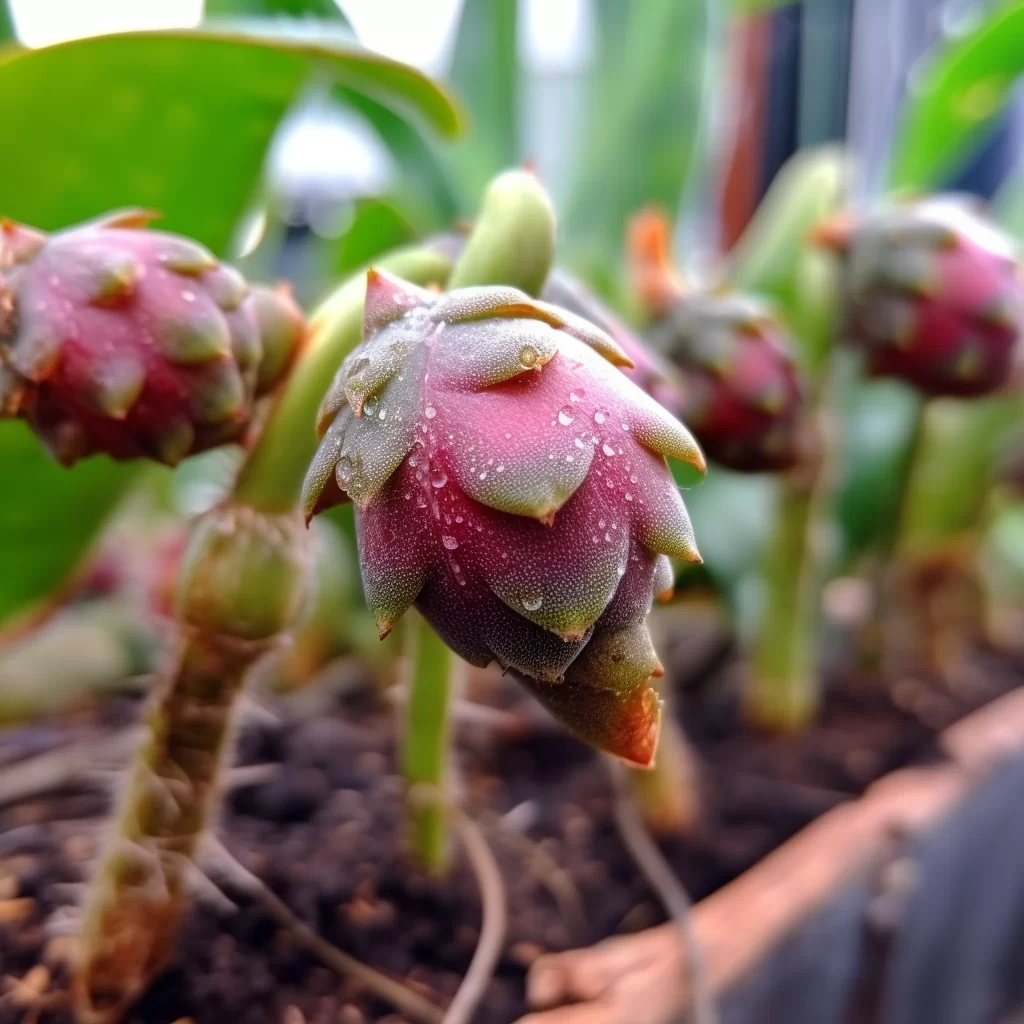Story of Day :
Contents
The Complete Guide to Dragon Fruit Cactus Plant: Care Tips, and More
Dragon fruit cactus, also known as pitaya, is a tropical fruit that has gained popularity in recent years due to its unique appearance and health benefits.
It is easy to grow and care for, making it a great addition to any garden.
In this guide, we will discuss everything you need to know about dragon fruit cactus plant care from planting to harvesting.
What is Dragon Fruit?
Dragon fruit originated in Mexico but can now be found all over the world.
The fruit itself grows on a cactus-like plant that produces beautiful white or pink flowers at night.
The fruit has a unique flavor that is both sweet and tart — some people describe it as a cross between kiwi and pear.
It’s high in fiber, vitamin C, iron, magnesium, and antioxidants.
Planting Dragon Fruit Cactus

When planting dragon fruit cactus plant indoors or outdoors choose an area with well-draining soil because they don’t like sitting in water for too long periods of time which can lead to root rotting issues if overwatered frequently or are planted on poorly draining soils.
They prefer warm environments with plenty of sunlight exposure so try your best providing these conditions when selecting the perfect spot for planting.
You can grow dragon fruits from seeds but this approach takes patience since growing time may take up months before seedlings emerge from the soil surface hence most growers prefer propagating using cuttings where one would remove several inches of stem from an existing healthy plant then place them into moist soil which should develop new roots within weeks.
Care Tips for Dragon Fruit Cacti
- Sunlight: As mentioned earlier, dragon fruit cactus plants love warm environments with plenty of sunlight exposure, therefore ensure to plant them in an area that can receive at least 6 hours of sunlight per day.
- Watering: Water your dragon fruit cactus regularly but do not overdo it as they are susceptible to root rot.
If planting indoors make sure the soil is moist but not soaking wet and adjust watering frequency according to the climatic condition in your area.
- Fertilizing: Apply a balanced fertilizer every month during growing season which is usually between spring until summer then add some organic compost on top of the soil surface for better growth and nutrient uptake.
It’s essential to note that fertilizing should reduce or be stopped entirely when winter sets in since this time their growth rate slows down.
- Pest control: Dragon fruits are relatively pest-free; however, some common pests can damage them, like scale insects and mealybugs.
Ensure you inspect your plant regularly for any sign of infestation and treat them appropriately depending on the severity using natural remedies or insecticides if necessary.
Harvesting Dragon Fruit Cacti

A dragon fruit tree produces fruit after around three years when planted from cuttings while seed-grown ones may take longer.
You will know it’s ready for harvest when its color changes from greenish-yellow into fully red or pink hue plus it starts feeling slightly soft upon pressing gently with fingers indicating ripeness inside which happens around late summer till early fall period.
To harvest a dragon fruit cactus carefully pluck it from its stem by twisting until snap-off point then slice open using a sharp knife before eating fresh or storing under refrigeration conditions up to several days depending on how ripe they were harvested initially.
Conclusion
Dragon fruit cactus plant is an easy-to-grow tropical fruit that is not only beautiful but also packed with numerous health benefits.
With proper care and attention, you can grow your own dragon fruit cactus at home and enjoy its sweet yet tangy flavor.
Remember to plant it in well-draining soil with plenty of sunlight exposure, water it regularly but avoid overwatering, fertilize monthly during growing season while reducing or stopping entirely during winter periods, inspect for pests regularly, and finally harvest when the fruits are fully ripe.
By following these simple tips provided in this guide above have fun growing this amazing tropical fruit!
